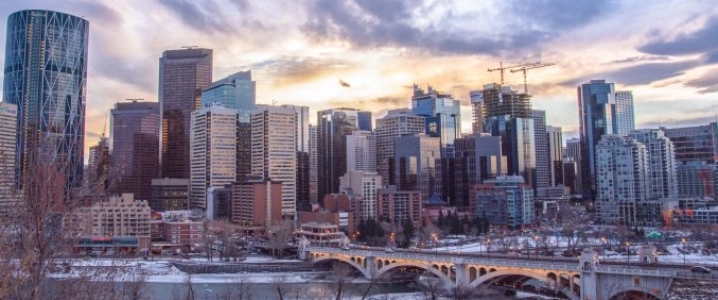As Canada continues to struggle with a dire deficit in pipeline capacity, the government is looking for new solutions. With oil prices deep in decline, the Alberta provincial government has already imposed production cuts, granted subsidies to the petrochemical sector, and even looked into overland transportation of crude with pipelines already running at maximum capacity. Now, Alberta is proposing another fix: a partial upgrading technology approach to thinning the oil sands’ heavy crude output in order to squeeze more of the substance through the nation’s congested pipelines.
So far, the government's production cuts have so far been very successful. Canadian crude prices have been able to recover much of their losses thanks to the new policy, from trading at a whopping $50 per barrel less than United States benchmark oil West Texas Intermediate (WTI) in October to a difference of just under $13 per barrel in January. That being said, the production cuts are not a long-term solution for Canada’s oil glut problem, and could ultimately discourage future investment.
While the root of Canada’s problem is a lack of pipeline infrastructure, this is not an easy or quick fix. Although there are currently multiple major pipeline projects underway, the two principal contenders, the Keystone XL pipeline and the Trans Mountain pipeline, are paused indefinitely, thanks to seemingly endless litigation and legal woes. The Enbridge Line 3 pipeline, a planned replacement for one of the region’s already existing pipelines, is currently under construction and on track to be operational by the end of the year, but will not be nearly enough to fix the bottleneck. Related: The Top Geopolitical Trends Of 2019
Enter the newest solution: partial upgrading. Last month the Albertan government announced that they would be granting a C$440 million loan guarantee for a C$2-billion partial upgrading facility, to be constructed in the Edmonton area by private Alberta-based company Value Creation. The plant would convert 77,500 barrels of diluted bitumen into into medium crude oil and low-sulfur diesel per day when it’s up and running at full capacity beginning in 2022.
Canada, the world’s seventh largest producer of crude oil, traditionally produced a viscous and heavy crude from the abundant Albertan oil sands. Most of this oil is lightened in some way, either by a full upgrading process or by mixing with light oil before it is sent through the country’s burdened pipelines. Upgrading this heavy crude into synthetic light oil is an extremely costly process, so the country’s new partial upgrading technology angle could be a game-changer. Related: Can Ukraine Gain Energy Independence?
Being a producer of medium grade crude would give Canada an edge in the market by avoiding direct competition with the United States’ massive and ever-expanding production of light shale oil. The move toward partial upgrading is, however, a bold one. It’s never been done before on a commercial scale, not just in Canada, but anywhere in the world. The process removes impurities such as sulfur to turn the heavier crude into lighter grades of oil that don’t need to undergo a costly dilution process in order to be move through the pipeline system. The idea is to make a much more efficient and much less-cost prohibitive method for processing and shipping the heavy crude that Canada naturally creates.
Despite the numerous potential benefits, embarking into partial upgrading at this moment in time is not without its risks. Alberta’s currently ruling New Democratic Party administration is going to be challenged in this spring’s upcoming election, and the opposing United Conservative Party would review all subsidized energy projects approved under the current government. In addition, by the time the first costly upgrader plant is up and running in 2022, additional pipeline capacity could already be open, removing a large part of the demand for partially upgraded oil.
That being said, Canada can’t and has not sat idly by as their crude oil prices continue to slide, and so far, the solutions seem to be working.
By Haley Zaremba for Oilprice.com
More Top Reads From Oilprice.com:


















